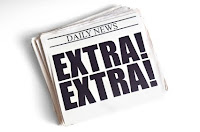The persuasive power of mimicry has been well established in the fields of sales and marketing, yet professionals in education and the social services rarely use the strategy to get an advantage. It can be a very powerful tool for success in grant writing.
Language mimicry in grant writing is all about using the same language of the scoring criteria in your responses to the criteria. I’m not talking about merely restating the criteria, but using the exact language of the criteria somewhere in your response.
Here’s a very basic example: If the scoring criterion is, “The degree to which the applicant identifies and addresses gaps in services,” you would not discuss “services that are missing.” You would specifically use the language “gaps in services.” You would also claim that your project “addresses these gaps in services to a very high degree,” or that it represents a “superior approach to addressing gaps in services.” Of course, the detail is important, but using the language of the criteria signals to readers that you are focusing on those criteria.
Unfortunately, what many people do instead of mimicking the language is to simply restate the criteria. “Our project has identified gaps in services and addresses them,” is an example of simply restating the criterion.
There are several reasons why this strategy gives you a leg up:
- Grant readers become fatigued after reading several grants. Fatigue begins to set in with the third grant read in a sitting. As they become fatigued, they start to look for key words. What are those key words? The key words in the scoring criteria. the later in the day your proposal is read, the more important those key words become.
- Not all grant readers are experts in the disciplines of the competition. This is most commonly seen in the area of evaluation. The criteria may include a requirement that your evaluation use both qualitative and quantitative data, and you may have given examples of both qualitative and quantitative data. However, most grant readers are not evaluators and I have seen examples of readers not being able to identify listed data sources as qualitative and quantitative. You need to write “The qualitative data we will collect for evaluation purposes are…..” and “The quantitative data we will collect….”
- In federal competitions, readers from other states may not understand programs in your state. For example, the criteria may say that the projects must include services for youth in schools going through a program improvement process. Your state may have a particular name for that process that does not include the words “program improvement.” You cannot assume the readers will just know.
- The psychological research in the area of mimicry tells us it works. When you mimic the language of the scoring criteria, the readers view you as more professional and more responsive to the RFP, in the same way that physically mimicking the person you are talking to in a meeting gives the impression that you are more interested and focused on that person’s needs.
Language mimicry is not the only thing you need to pay attention to in the grant writing process. It is not even the most important thing to remember. However, it is one of those secrets that separates a good grant writer with a moderate level of success from the great ones with phenomenal success. Which one do you want to be?




